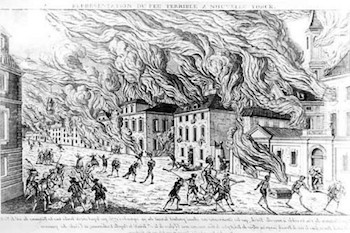This Day in Black History
Share
Explore Our Galleries
Breaking News!
Today's news and culture by Black and other reporters in the Black and mainstream media.
Ways to Support ABHM?

On this date in 1712, the New York Slave Rebellion occurred.
Reacting to harsh treatment by their masters, about 25 Black slaves and American Indians set fire to an outhouse and laid in ambush of their oppressors, killing nine men and wounding several others. The slaves then fled into the woods where within two days more than 40 had been arrested and 6 others committed suicide before apprehension. Twenty-seven slaves were convicted of murder and sentenced to death, although the bulk of the evidence used to convict them was questionable. eighteen were acquitted, six, including a pregnant woman, were let go.
Read more about the rebellion here.
Learn about America’s nearly three centuries of enslavement.









Comments Are Welcome
Note: We moderate submissions in order to create a space for meaningful dialogue, a space where museum visitors – adults and youth –– can exchange informed, thoughtful, and relevant comments that add value to our exhibits.
Racial slurs, personal attacks, obscenity, profanity, and SHOUTING do not meet the above standard. Such comments are posted in the exhibit Hateful Speech. Commercial promotions, impersonations, and incoherent comments likewise fail to meet our goals, so will not be posted. Submissions longer than 120 words will be shortened.
See our full Comments Policy here.